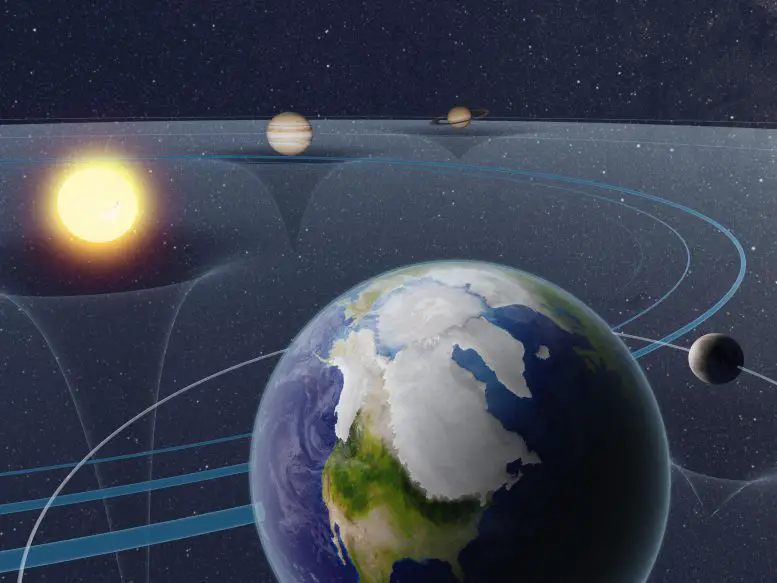Data on the origin of ice age cycles in space
- May 16, 2023
- 0
A team of researchers, including climatologists and an astronomer, used an advanced computer model to reconstruct ice age cycles that occurred between 1.6 and 1.2 million years ago.
A team of researchers, including climatologists and an astronomer, used an advanced computer model to reconstruct ice age cycles that occurred between 1.6 and 1.2 million years ago.

A team of researchers, including climatologists and an astronomer, used an advanced computer model to reconstruct ice age cycles that occurred between 1.6 and 1.2 million years ago. The data show that ice ages were heavily influenced by astronomical forces in a completely different way than they are now. This information will contribute to a more complete understanding of Earth’s ice sheets and climate in the past, present and future.
Slow and gradual changes in the Earth’s orbit around the Sun and the direction of its axis of rotation are affected by the gravitational forces of the Sun, Moon, and other planets. These astronomical factors affect the Earth’s environment, changing the distribution of sunlight and the differences between the seasons. In particular, ice sheets are very sensitive to these external forces that cause glacial and interglacial cycles.
The modern glacial-interglacial cycle has a period of about 100,000 years. However, the glacial cycle in the early Pleistocene (about 800,000 years ago) changed more rapidly with a cycle of about 40,000 years. External astronomical forces were thought to be responsible for this change, but the details of the mechanism are not clear. In recent years, thanks to the clarification of geological data and the development of theoretical research, it has become possible to examine the role of astronomical forces in more detail.
Using an advanced climate computer model, the team led by Yasuto Watanabe of the University of Tokyo focused on the Early Pleistocene epoch 1.6 to 1.2 million years ago. These simulations take into account astronomical forces based on today’s most advanced theory. The large-scale numerical simulations in this study reproduce well the 40,000-year early Pleistocene glacial cycle as the geological record shows.
Analyzing the results of the simulations, the team discovered three facts about the mechanisms by which astronomical forces were causing climate changes at that time. (1) The glacial cycle is determined by small differences in the orientation of the axis of rotation and the amplitude of changes in Earth’s orbit. (2) The time of glaciation is determined primarily by the orbital position of the summer solstice at the perihelion, and not merely by the effect of the periodic change in the tilt of the Earth’s axis. (3) The time of change of the orientation of the axis of rotation and its position on the orbit of the summer solstice determines the duration of the interglacial period.
“As ancient geological data emerge, it becomes clear that there was a different climate regime on Earth than today. We need to have a different understanding of the role of astronomical influence in the distant past,” he says.
“The numerical simulations performed in this study not only well reproduce the Pleistocene glacial-interglacial cycle, but also successfully explain the complex implications of how astronomical influences continued the cycle at that time. We make this work a replication of glacial cycles beyond the borders of the modern Earth. We can consider it as a starting point for investigation.”
Source: Port Altele
As an experienced journalist and author, Mary has been reporting on the latest news and trends for over 5 years. With a passion for uncovering the stories behind the headlines, Mary has earned a reputation as a trusted voice in the world of journalism. Her writing style is insightful, engaging and thought-provoking, as she takes a deep dive into the most pressing issues of our time.